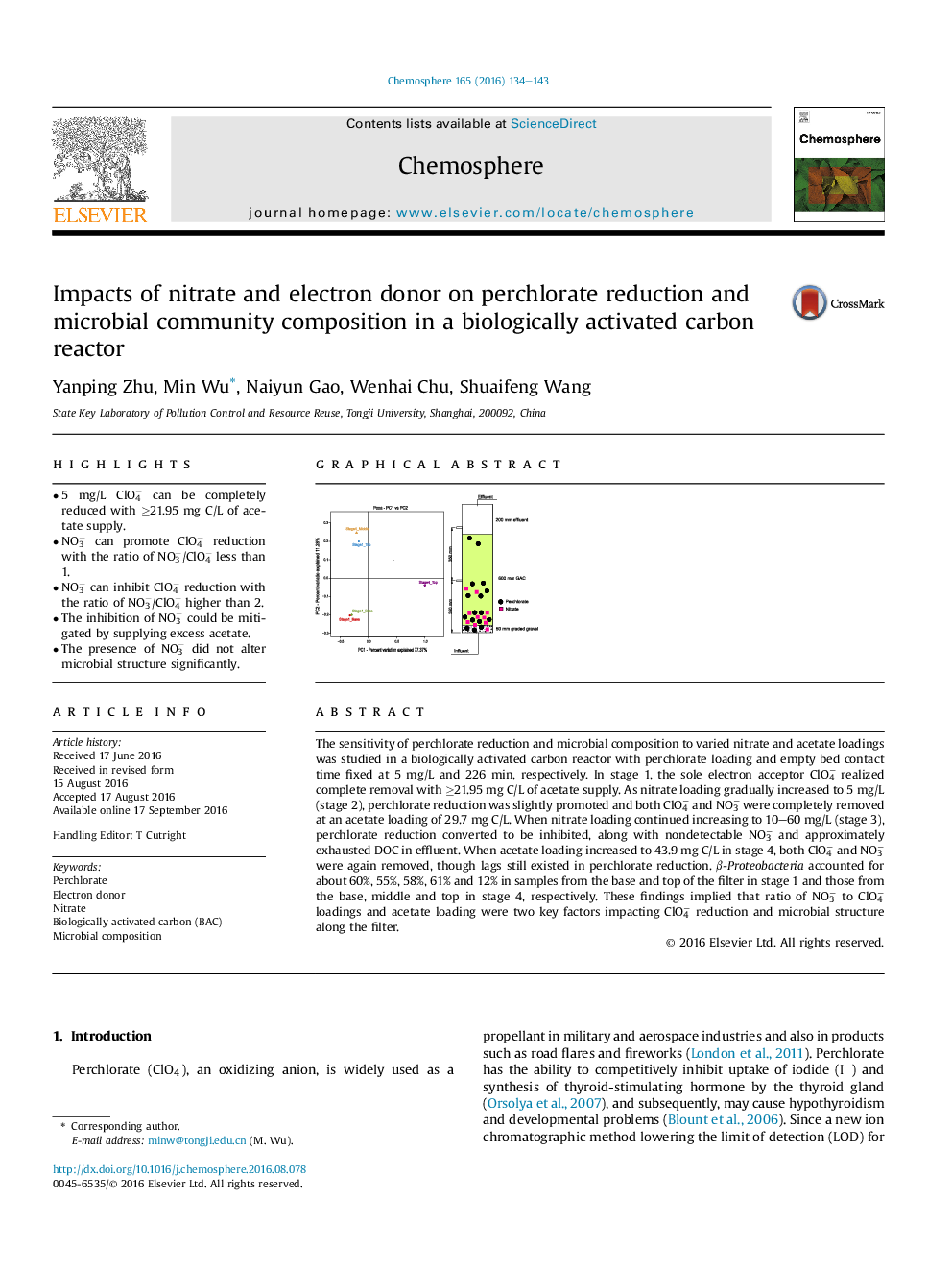| Article ID | Journal | Published Year | Pages | File Type |
|---|---|---|---|---|
| 4407335 | Chemosphere | 2016 | 10 Pages |
•5 mg/L ClO4− can be completely reduced with ≥21.95 mg C/L of acetate supply.•NO3− can promote ClO4− reduction with the ratio of NO3−/ClO4− less than 1.•NO3− can inhibit ClO4− reduction with the ratio of NO3−/ClO4− higher than 2.•The inhibition of NO3− could be mitigated by supplying excess acetate.•The presence of NO3− did not alter microbial structure significantly.
The sensitivity of perchlorate reduction and microbial composition to varied nitrate and acetate loadings was studied in a biologically activated carbon reactor with perchlorate loading and empty bed contact time fixed at 5 mg/L and 226 min, respectively. In stage 1, the sole electron acceptor ClO4− realized complete removal with ≥21.95 mg C/L of acetate supply. As nitrate loading gradually increased to 5 mg/L (stage 2), perchlorate reduction was slightly promoted and both ClO4− and NO3− were completely removed at an acetate loading of 29.7 mg C/L. When nitrate loading continued increasing to 10–60 mg/L (stage 3), perchlorate reduction converted to be inhibited, along with nondetectable NO3− and approximately exhausted DOC in effluent. When acetate loading increased to 43.9 mg C/L in stage 4, both ClO4− and NO3− were again removed, though lags still existed in perchlorate reduction. β-Proteobacteria accounted for about 60%, 55%, 58%, 61% and 12% in samples from the base and top of the filter in stage 1 and those from the base, middle and top in stage 4, respectively. These findings implied that ratio of NO3− to ClO4− loadings and acetate loading were two key factors impacting ClO4− reduction and microbial structure along the filter.
Graphical abstractFigure optionsDownload full-size imageDownload as PowerPoint slide
